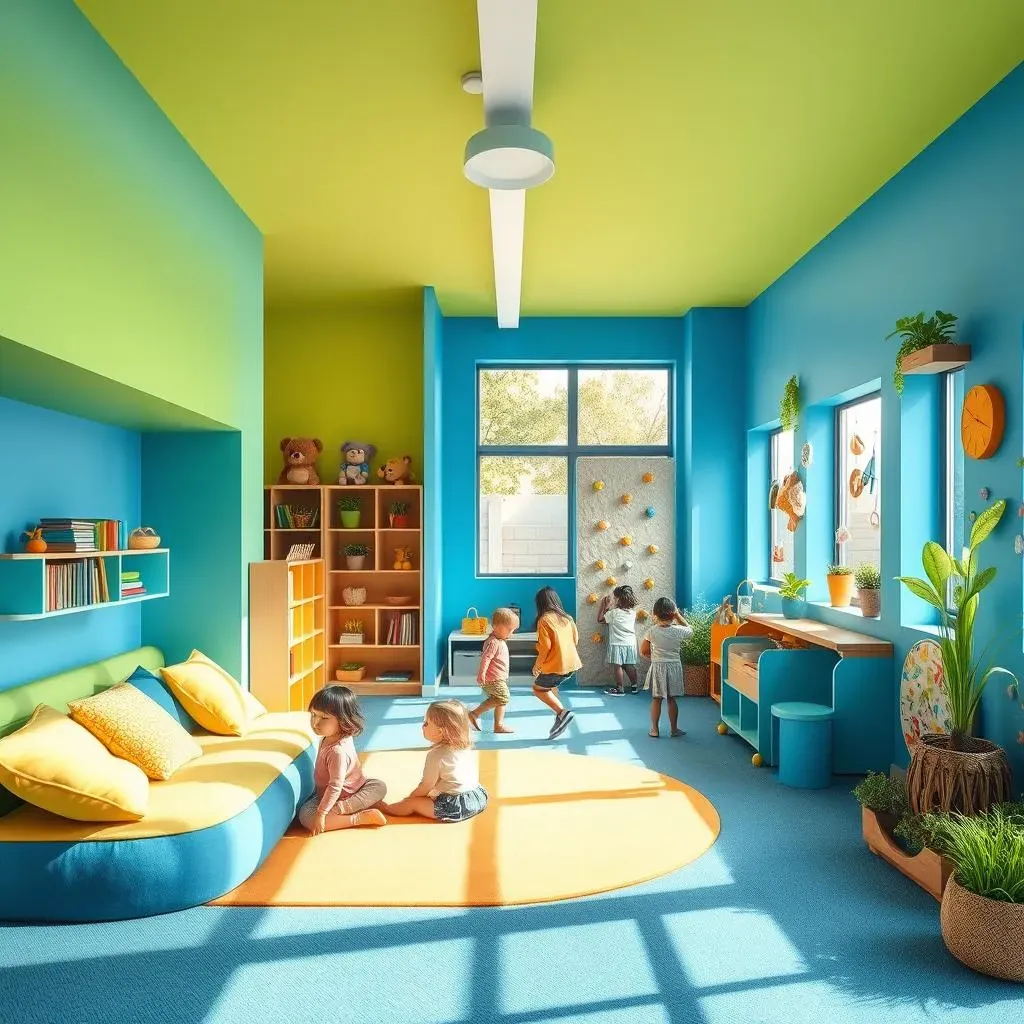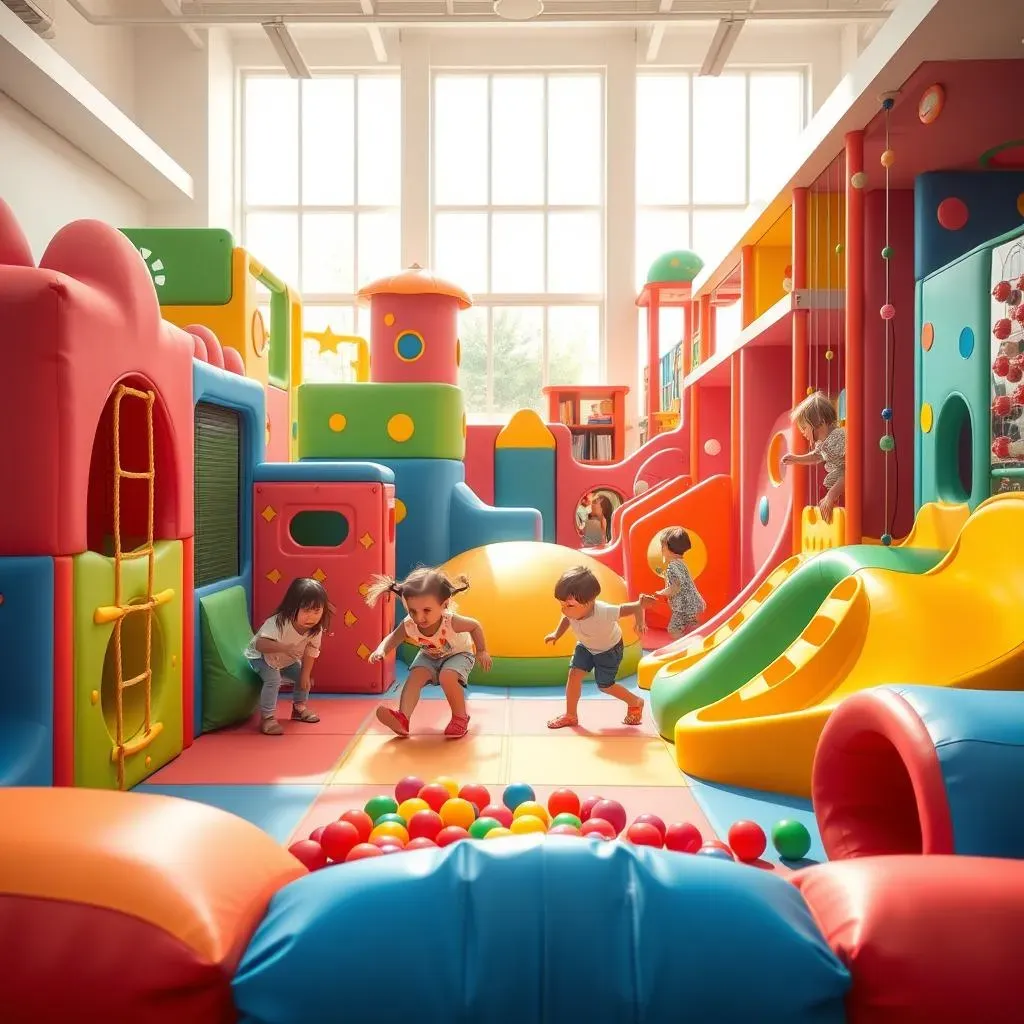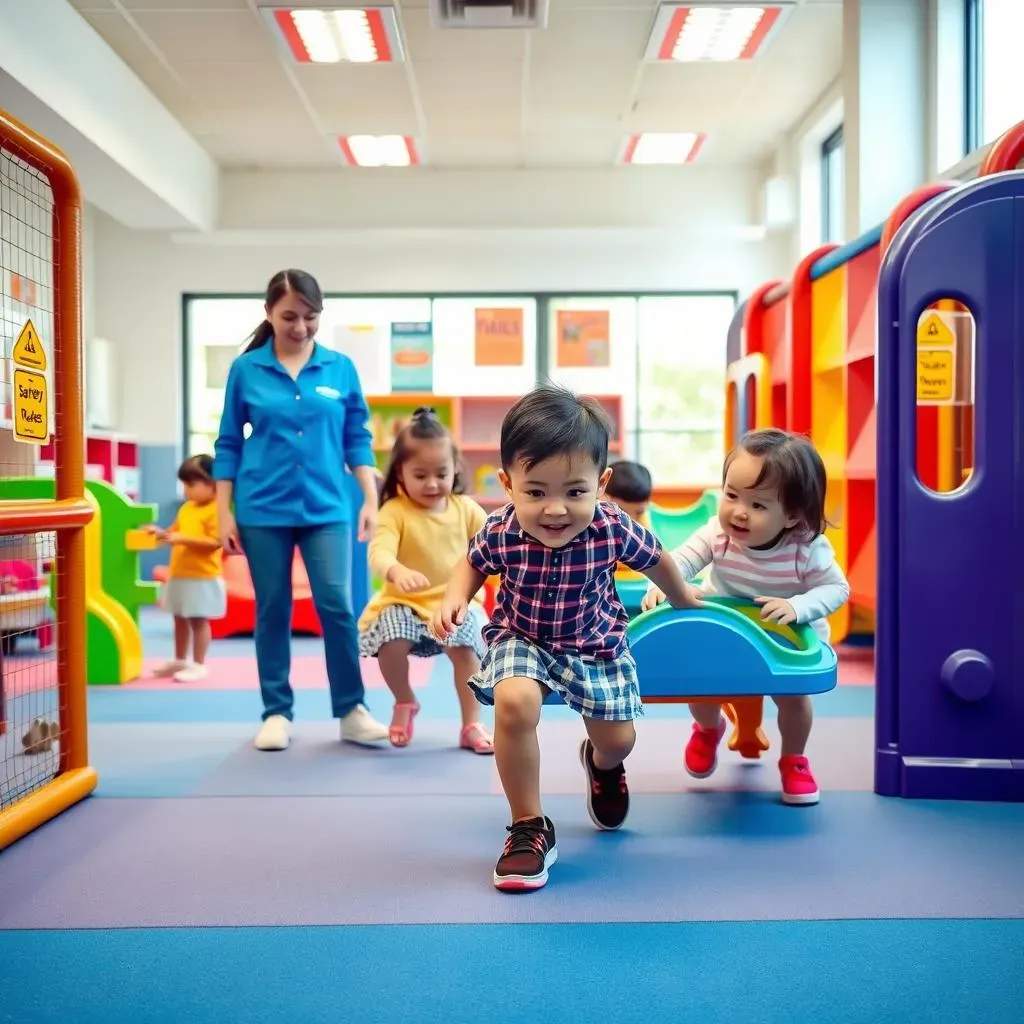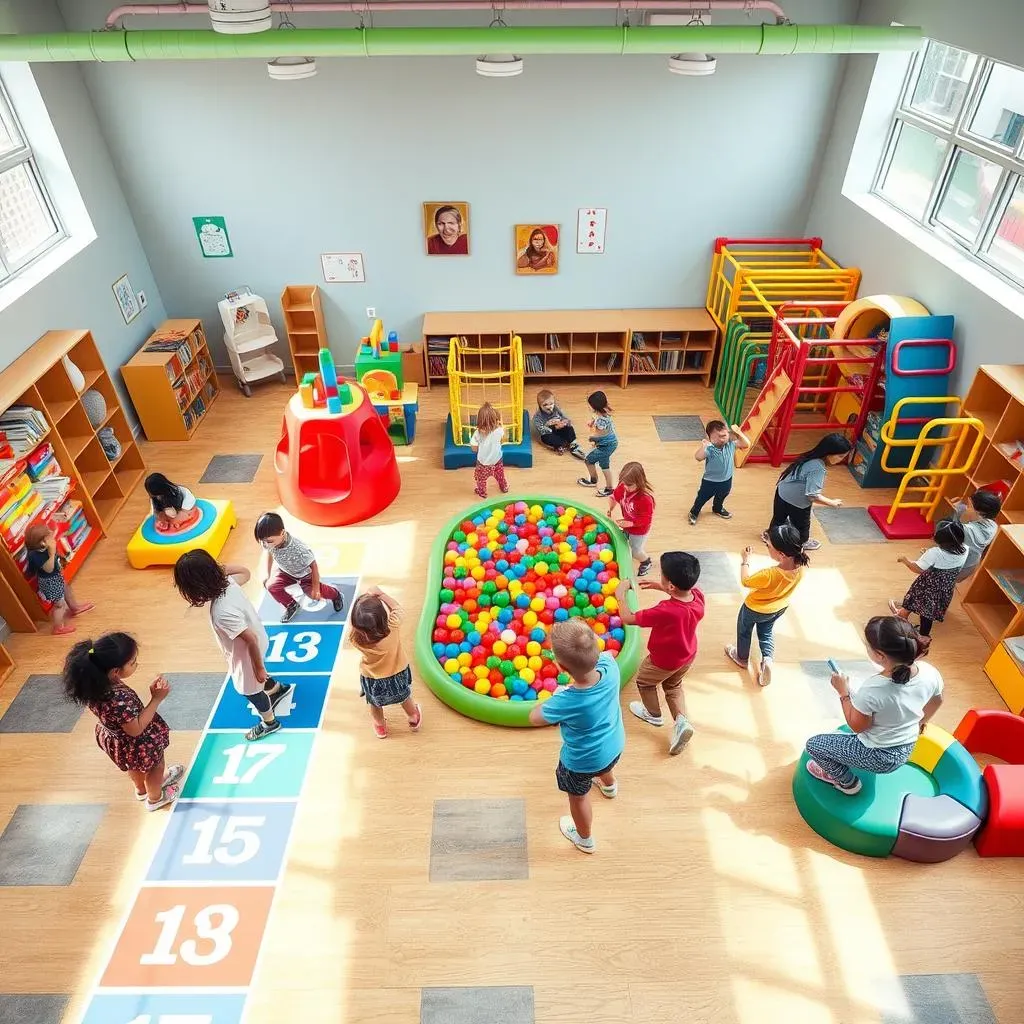Table of Contents
Akindergarten indoor playgroundisn't just about fun and games; it's a vital space for early childhood development. In a world increasingly focused on structured learning, these playgrounds offer a crucial outlet for children to explore, create, and socialize, regardless of the weather outside. We'll dive deep into how to design, equip, and maintain a safe and engaging indoor playground that sparks imagination and encourages physical activity.
Designing a Stimulating Kindergarten Indoor Playground

Designing a Stimulating Kindergarten Indoor Playground
Space Planning and Layout
So, you're diving into designing a kindergarten indoor playground? Awesome! First thing's first: think about the space you have. It's not just about cramming in as much stuff as possible. You need to consider flow. How will the kids move from one area to another? Are there any natural bottlenecks? A well-planned layout prevents chaos and encourages exploration.
Consider zones. A quiet reading nook is a world away from an active climbing area. Think about how different activities can coexist without disrupting each other. Use furniture, changes in flooring, or even strategic placement of equipment to define these zones. Natural light is your friend. Position areas that benefit from sunlight near windows, but don't forget to manage glare. And always, always keep safety in mind. Clear pathways, soft surfaces, and good visibility are non-negotiable.
Color, Texture, and Theming
Now, let's talk about making that space pop! Color psychology is real. Bright, vibrant colors stimulate energy and excitement. Softer, muted tones create a sense of calm and focus. Use a mix of both to create a balanced environment. Think about incorporating natural elements, too. Wood, plants, and even textured walls can bring the outdoors in and create a more sensory-rich experience.
Don't underestimate the power of a good theme! Whether it's a jungle adventure, an underwater world, or a futuristic cityscape, a cohesive theme can tie the whole space together and spark kids' imaginations. But keep it age-appropriate and avoid anything too scary or overwhelming. The goal is to create a space that's both stimulating and inviting, a place where kids can let their imaginations run wild.
Element | Considerations | Example |
|---|---|---|
Color | Balance of stimulating and calming tones | Bright blues and greens with soft yellows and oranges |
Texture | Variety to engage different senses | Soft carpets, textured walls, smooth wooden surfaces |
Theming | Age-appropriate and not overwhelming | A nature theme with animal cutouts and plant decorations |
Essential Equipment and Features for a Kindergarten Indoor Playground

Essential Equipment and Features for a Kindergarten Indoor Playground
Soft Play Structures
You absolutely need soft play structures in your kindergarten indoor playground. These are the building blocks of fun and safety. Think about it: padded climbers, tunnels, slides, and ball pits. These elements encourage gross motor skills development, coordination, and social interaction. They're also incredibly forgiving when little ones take a tumble, which, let's be honest, happens a lot! Opt for durable, easy-to-clean materials that can withstand the daily wear and tear of enthusiastic kids. And make sure everything is properly anchored and inspected regularly for safety.
Variety is key here. A mix of different shapes, sizes, and challenges keeps things interesting and caters to different skill levels. Consider incorporating interactive elements, like sound effects or light-up panels, to add an extra layer of engagement. Soft play structures aren't just about physical activity; they're about sparking imagination and creating a world of adventure within the safety of your indoor space.
Climbing and Crawling Elements
Next up, let's talk climbing and crawling! These elements are essential for developing strength, balance, and spatial awareness. Think small climbing walls with easy-to-grip holds, tunnels that encourage crawling and exploration, and rope bridges that challenge kids to navigate different textures and heights. Again, safety is paramount. Make sure all climbing surfaces are padded and that there's adequate supervision to prevent accidents.
Don't be afraid to get creative with your climbing and crawling elements. You can incorporate them into your theme, creating a jungle vine climb or a secret cave tunnel. You can also use them to teach basic concepts, like colors, shapes, or numbers. For example, color-coded climbing holds can help kids learn their colors while they're getting a workout. The goal is to make learning fun and engaging, and climbing and crawling elements are a great way to do just that.
Equipment Type | Benefits | Safety Considerations |
|---|---|---|
Soft Climbers | Develop gross motor skills, coordination | Padding, secure anchoring |
Tunnels | Encourage crawling, spatial awareness | Clear visibility, soft surfaces |
Rope Bridges | Challenge balance, coordination | Sturdy construction, adequate spacing |
Safety First: Ensuring a Secure Kindergarten Indoor Playground Environment

Safety First: Ensuring a Secure Kindergarten Indoor Playground Environment
Regular Inspections and Maintenance
Alright, let's get real about safety. No matter how awesome your kindergarten indoor playground is, it's only as good as its safety measures. The cornerstone of a safe playground is regular inspections and maintenance. I'm talking daily walk-throughs to check for hazards like loose screws, torn padding, or damaged equipment. Don't just glance; get down on your hands and knees and really examine everything. A proactive approach can prevent accidents before they happen. Keep a detailed log of your inspections and any maintenance performed. This not only helps you stay organized but also provides a record of your commitment to safety.
Maintenance isn't just about fixing things when they break; it's about preventative care. Tighten bolts, replace worn-out parts, and clean surfaces regularly. Pay special attention to high-traffic areas and equipment that gets a lot of use. And don't forget about the little things, like ensuring that emergency exits are clear and that fire extinguishers are easily accessible and in good working order. A well-maintained playground is a safe playground, and that's something we can all agree on.
Protective Surfacing and Fall Zones
Protective surfacing is your playground's safety net, literally. It's the material that cushions falls and minimizes injuries. We're talking about things like poured-in-place rubber, rubber tiles, engineered wood fiber, or even sand and gravel (though those require more maintenance). The type of surfacing you choose will depend on your budget, the height of your equipment, and the overall aesthetic you're going for. But no matter what you choose, make sure it meets the recommended fall height standards for each piece of equipment.
Fall zones are the areas around equipment where a child is likely to fall. These zones should be free of obstructions and covered with protective surfacing. The size of the fall zone will depend on the height of the equipment. For example, a taller slide will require a larger fall zone than a smaller climber. It's crucial to consult safety guidelines and regulations to ensure that your fall zones are adequate. A well-designed fall zone can make all the difference in preventing serious injuries.
Surfacing Material | Pros | Cons |
|---|---|---|
Poured-in-Place Rubber | Durable, low maintenance, accessible | Expensive, requires professional installation |
Rubber Tiles | Easy to install, good shock absorption | Can be expensive, may require adhesive |
Engineered Wood Fiber | Affordable, natural look | Requires regular maintenance, not accessible |
Supervision and Safety Rules
Even with the best equipment and surfacing, supervision is key. Active, engaged supervision is the best way to prevent accidents and ensure that kids are playing safely. Make sure you have enough staff to adequately supervise the number of children in the playground. Train your staff on playground safety rules and emergency procedures. And encourage them to actively interact with the children, rather than just passively observing.
Establish clear safety rules and communicate them to both children and parents. Rules might include things like "no running on the playground," "one person at a time on the slide," or "no climbing on the outside of the equipment." Post these rules in a visible location and consistently enforce them. A combination of attentive supervision and clear safety rules creates a culture of safety in your kindergarten indoor playground.
Maximizing Learning Through Play in Your Kindergarten Indoor Playground

Maximizing Learning Through Play in Your Kindergarten Indoor Playground
Integrating Educational Games
so you've got this amazingkindergarten indoor playground, but how do you make it more than just a place to burn off energy? The secret is integrating educational games seamlessly into the play environment. Think about it: a hopscotch grid that reinforces number recognition, a color-coded ball pit that teaches color sorting, or even a mini-obstacle course that incorporates directional words like "over," "under," and "through." The possibilities are endless!
The key is to make learning feel like play. Don't just slap a worksheet on the wall and call it educational. Instead, create games that are fun, engaging, and naturally incorporate learning concepts. For example, you could set up a scavenger hunt where kids have to find objects of different shapes and colors hidden throughout the playground. Or you could create a "construction zone" where kids use building blocks to create structures based on simple blueprints. The goal is to make learning an active, hands-on experience that kids actually enjoy.
Encouraging Social Interaction and Cooperation
Akindergarten indoor playgroundis a fantastic place to foster social skills and cooperation. Design your playground to encourage interaction. Think about adding group activities, like a large building block area where kids can work together to create structures, or a dramatic play area where they can act out stories and scenarios. Encourage kids to communicate, share, and problem-solve together. Set up scenarios that require teamwork, like moving a large object from one side of the playground to the other. Praise cooperation and teamwork, and emphasize the importance of working together to achieve a common goal.
Remember, social skills are just as important as academic skills. A well-designed playground can help kids develop empathy, communication skills, and the ability to work effectively in a group. These are skills that will serve them well throughout their lives. By creating a playground that encourages social interaction and cooperation, you're helping kids become well-rounded, socially competent individuals.
Activity | Learning Objective | Example |
|---|---|---|
Building Blocks | Cooperation, problem-solving, spatial reasoning | Building a tower together as a team |
Dramatic Play | Communication, empathy, social skills | Acting out a story with different roles |
Obstacle Course | Teamwork, problem-solving, gross motor skills | Navigating the course as a group |
Developing Problem-Solving Skills
Believe it or not, akindergarten indoor playgroundcan be a fantastic place to develop problem-solving skills. Design the playground to present challenges that require kids to think critically and creatively. For example, you could create a maze that kids have to navigate, or a puzzle that they have to solve to unlock a hidden treasure. Encourage kids to experiment, try different approaches, and learn from their mistakes. Provide them with the tools and resources they need to solve problems, but resist the urge to give them the answers directly. Instead, guide them through the problem-solving process by asking questions and offering suggestions.
Problem-solving skills are essential for success in school and in life. A well-designed playground can provide kids with opportunities to develop these skills in a fun, engaging, and low-stakes environment. By creating a playground that challenges kids to think critically and creatively, you're helping them become confident, resourceful problem-solvers.
Conclusion: Building a Brighter Future Through Play
Creating akindergarten indoor playgroundis an investment in the future. By carefully considering design, equipment, safety, and the integration of learning opportunities, you can create a space where children thrive. It's more than just a playground; it's a launchpad for creativity, social skills, and a lifelong love of learning. Embrace the power of play and watch your kindergarten bloom.